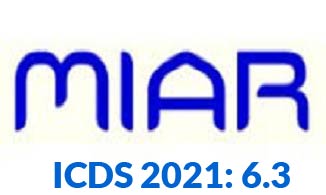Nicolas Théodore Saussure: Contributions to chemistry and physical chemistry
Palabras clave:
absorption, alcohol, alumina, CO2 decomposition, eudiometry, sugarResumen
Nicolas Théodore de Saussure (1767-1845) is well recognized for his pioneering work about plant physiology and the interaction between plants, soil, and atmosphere. Here we describe some of his findings in chemistry and physical chemistry, in particular the possible combination of alumina with carbon dioxide to generate aluminum carbonate and its different degrees of desiccation in its various states. He demonstrated that starch mixed with water alone was able to generate crystallizable sugar in larger amount than when acted on by sulfuric acid; his procedure yielded also amidine, a substance with properties intermediate between starch and gum. Saussure used a eudiometric procedure to determine the correct composition of ethanol, diethyl ether, and ethylene. He carried an extensive study of the absorption of pure gases and their mixtures by many solids and liquids and proved that all porous bodies were capable of absorbing gases and that this property depended on factors such as the number of pores and their dimension, the affinity between the gas and the solid body, and the compressibility of the gas. In the case of mixtures, two gases absorbed in charcoal often experienced a greater condensation than each would in a separate state. The absorption of a gas by a liquid was little affected by its viscosity, although it affected the time required for achieving saturation. His electrical experiments showed that hydrogen appeared to combine with part of the oxygen of carbon dioxide to form water, while the dioxide was reduced to he monoxide.
Descargas
Publicado
Cómo citar
Número
Sección
Licencia
Los autores que publican en esta revista están de acuerdo con los siguientes términos:
Los autores conservan los derechos de autor y garantizan a la revista el derecho de ser la primera publicación del trabajo al igual que licenciado bajo una Creative Commons Atribución-NoComercial-CompartirIgual 4.0 que permite a otros compartir el trabajo con un reconocimiento de la autoría del trabajo y la publicación inicial en esta revista.
Los autores pueden establecer por separado acuerdos adicionales para la distribución no exclusiva de la versión de la obra publicada en la revista (por ejemplo, situarlo en un repositorio institucional o publicarlo en un libro), con un reconocimiento de su publicación inicial en esta revista.
Se permite y se anima a los autores a difundir sus trabajos electrónicamente (por ejemplo, en repositorios institucionales o en su propio sitio web) antes y durante el proceso de envío, ya que puede dar lugar a intercambios productivos, así como a una citación más temprana y mayor de los trabajos publicados (Véase The Effect of Open Access) (en inglés).















